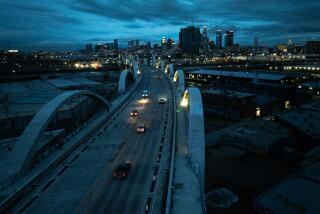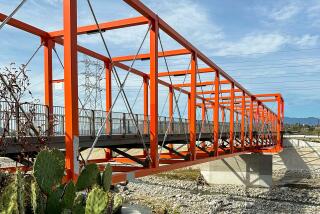Beautiful, and deadly
‘Who would want to jump from the Golden Gate Bridge?” engineer Joseph Strauss is said to have asked around the time the Bay Area’s greatest monument was completed in 1937. In the 70 years since, more than 1,300 people have provided an answer. This year’s uptick in jumping incidents has renewed the decades-long debate about whether to add an anti-suicide net under the bridge, raise the 4-foot pedestrian railing or use some other means to get between people who are looking to kill themselves and the 220-foot drop that in all but a handful of cases enables them to do so.
In the first result of that debate, local authorities have stopped leaning on local media to downplay bridge suicides. This misguided policy sought to reduce deaths by not advertising the bridge’s attractiveness as a suicide location. Although there may be a copycat effect, one thing is clear: You don’t need anybody to tell you the Golden Gate Bridge is quite possibly the most spectacular place on the planet to kill yourself.
It is in fact the stunning beauty of the place that makes an effective anti-suicide policy so troublesome. To stand at midspan, particularly on the western, Pacific-facing lane, is to feel close to the infinite, to half-believe that soaring over the edge would lead not to a hideously violent death but to an elegant surrender to the grandness of the universe. This sense has informed suicide legends such as the apparent death of the poet Weldon Kees, whose car was found parked by the bridge in 1955 -- leading to the probable conclusion that he jumped but also to a popular story that he stage-managed an off-the-grid escape from the bustle of the workaday world.
This is not to say that the bridge’s openness causes suicides. Various wrongful-death lawsuits by jumpers’ survivors have been thrown out, and rightly so. But it is disingenuous to argue that there isn’t something about the bridge that inspires jumpers. Suicidologist and bridge activist Dr. Richard Seiden demonstrated in a 1978 study that nearly all the people prevented from jumping did not go on to kill themselves in some other way. The bridge’s lack of restraints makes suicide not only easy but in a perverse way attractive.
It also fits the open style that puts the Bay Area in contrast to the frequently fenced-in look of Southern California. San Francisco and Marin Counties are dotted with strikingly approachable leaps, vista points and cliffs, of which the bridge is just the most dramatic. That aesthetic is hard to dispute, and part of the reason majorities of San Franciscans have traditionally opposed modifying the bridge. It’s also true that the Golden Gate is as much an aesthetic as a utilitarian object. (The real work of moving traffic is done by the unloved Bay Bridge.) It’s barbaric to argue that aesthetics are worth 1,300 lives, but something will be lost if the bridge is made suicide-proof. Now that the bodies are being counted publicly again, the debate on the beautiful bridge can be held honestly.
More to Read
The biggest entertainment stories
Get our big stories about Hollywood, film, television, music, arts, culture and more right in your inbox as soon as they publish.
You may occasionally receive promotional content from the Los Angeles Times.










